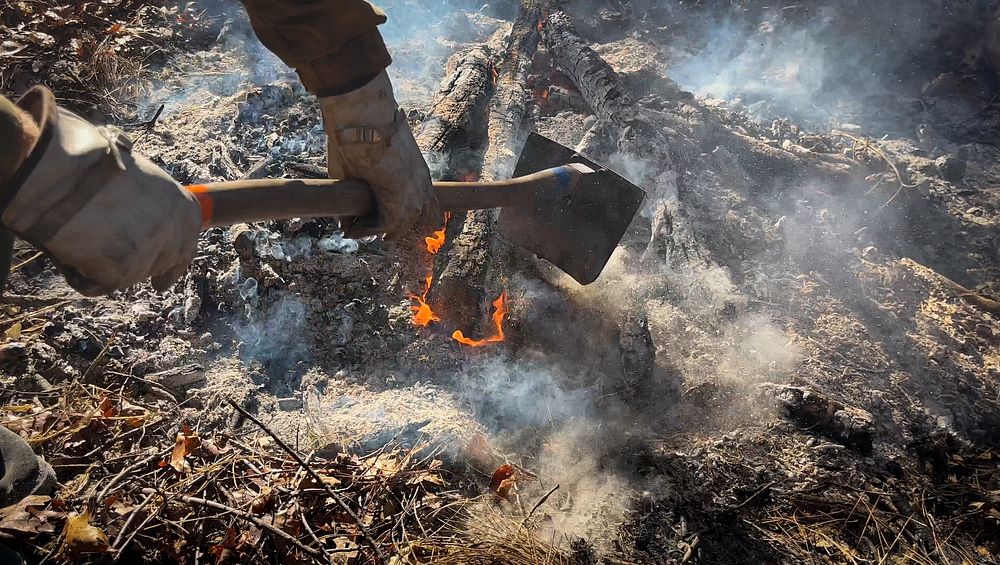https://www.usa.gov/copyrighted-government-workshttps://www.rawpixel.com/image/11071904

Firefighter tends to a burning pile of brush to ensure that it is fully consumed and contained, during a pile burn to remove the hazardous fuels on the Shasta-Trinity National Forest December 6, 2022.
The campground located to the north of popular recreation destination Shasta Lake, is an ideal location for prescribed fire-- aesthetically and strategically. Aesthetically, pile burning reduces dense brush allowing recreators to move around the campground more freely. Strategically, reducing fuels in areas around campgrounds where campfires or stoves are often used reduces the risk of a wildfire starting and spreading. Reducing fuels in these areas also helps protect campground infrastructure, picnic tables, bathroom facilities, etc.
Pile burning is usually a one-to-two-year process from beginning to end. First brush, or slash is collected and placed in piles. Then the pile will sit for a year drying out to be burned in wetter colder months.
On the day of a pile burn conditions are a prime consideration for fire managers in determining whether to implement a pile burn. If any of the weather conditions do not adhere to the burn plan, then the pile burn will be postponed to a date when conditions are more favorable. Some of those weather conditions include wind speed and direction, temperature, drought history/ recent precipitation, relative humidity and fuel moistures. The pile burn is just one type of prescribed fire implemented throughout the year on the Shasta-Trinity National Forest which conducts approximately 12k acres annually around, communities, infrastructure and other strategic locations. (USDA Forest Service photo by Andrew Avitt)
Original public domain image from Flickr
Public DomainFree CCO U.S. Government image for Personal and Business use